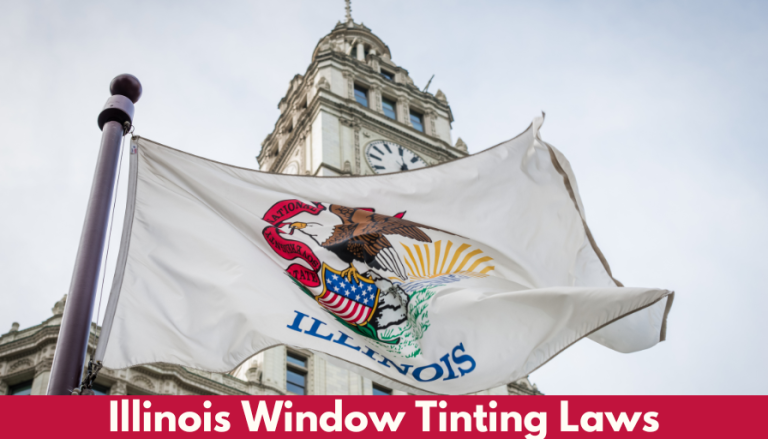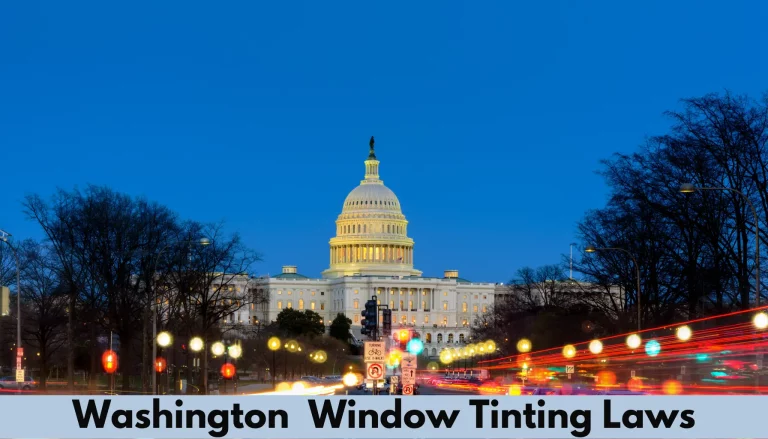Stay Legal: Colorado Window Tint Laws & Reflectivity Rules
Driving through Colorado’s breathtaking landscapes, I’ve noticed the sun can be quite intense, especially at higher altitudes. That’s why many Coloradans turn to window tinting for comfort and UV protection. But before you dive in, it’s crucial to know the state’s specific regulations to avoid fines and ensure your vehicle is street-legal.
As someone who’s navigated these rules, I understand how confusing they can be. Colorado’s window tinting laws balance the benefits of tinting with safety considerations. I’ll break down the legal limits for darkness and reflection, so you can make informed decisions for your ride.
Whether you’re a Denver commuter or cruising the mountain roads, staying within legal bounds is key for your tinted windows.
Understanding Colorado Window Tinting Laws
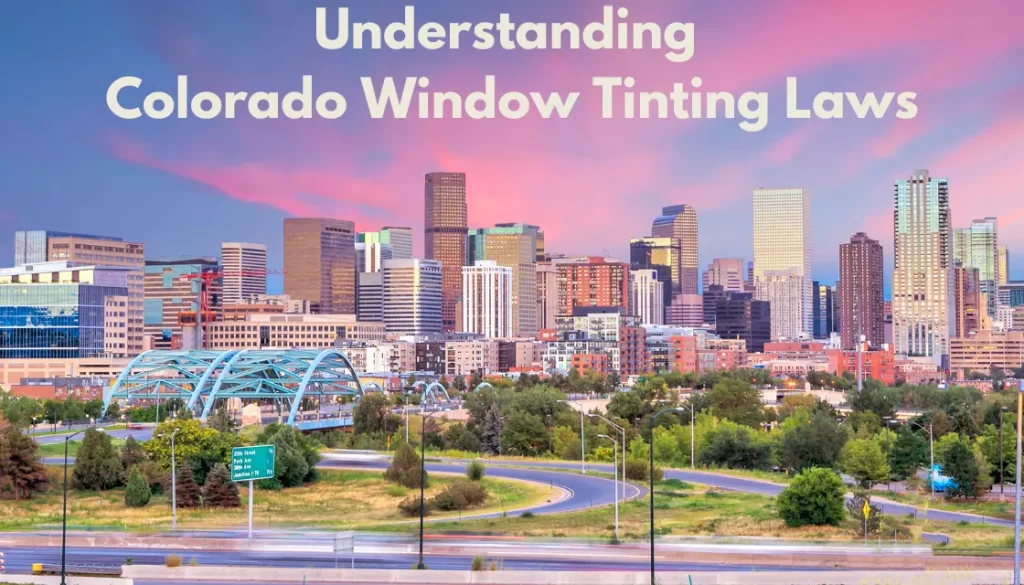
When it comes to customizing your car, it’s tempting to opt for that sleek tinted look. But before you dive in, you’ve got to understand the legal guidelines that Colorado sets forth. Colorado law stipulates certain restrictiveness for window tints, which primarily focus on the visible light transmission (VLT%) allowed through the window film.
So here’s the skinny. Under Colorado law:
- The front side windows must allow more than 27% of the light in.
- The back side and rear window can be tinted to any darkness you want, as long as you have side mirrors.
- Reflective tints are another aspect to watch for – the front and back side windows must not be more than 35% reflective.
These limitations are enforced to ensure that drivers have sufficient visibility, which is critical for both their safety and the safety of others on the road.
It’s not just about the percentage of light let in; there’s also the question of how much light is reflected. Highly reflective window tints can cause a dangerous glare for other drivers. That’s why the regulations on reflectiveness are put in place. In Colorado, the goal is to minimize such risks.
Still, despite these regulations, drivers do have some leeway. For those who require darker tints due to medical conditions, Colorado offers an exemption certificate. To qualify, you’ll need documentation from a licensed physician stating that you require special shielding from the sun.
Benefits of Window Tinting
While understanding Colorado’s laws on window tinting is essential, it’s just as important to recognize the advantages that come with professionally installed window tints. Not only do they enhance the aesthetic appeal of your car, but they also offer a range of practical benefits.
UV Protection is one of the most significant benefits provided by window tints. A high-quality film can block up to 99% of harmful ultraviolet rays from the sun, which are known to cause skin aging and can contribute to skin cancer. By having my car windows tinted, I’ve noticed the interior fabrics and leathers don’t fade or degrade as quickly, preserving the look and value of my vehicle.
Reduced Heat is another perk of window tinting. The film acts as an insulator for your car’s windows, helping to keep the interior cooler during those scorching Colorado summers. It’s not only about comfort – the reduced heat means I’m less likely to overwork the air conditioning system, potentially leading to improved fuel efficiency.
Tinted windows also contribute to Enhanced Privacy and Security. A darker tint obscures the view into my car, offering a deterrent to potential thieves who can’t easily see what valuables I might have inside. This added level of privacy ensures that I can travel with greater peace of mind.
Lastly, Glare Reduction. Glare from the sun or headlights can be a significant driving hazard. Tinted windows cut down on this glare, making it easier for me to see the road and reducing eye strain during both day and night driving.
Legal Limits for Darkness
When discussing the legal limits for window tint darkness in Colorado, it’s crucial to center on the VLT%, or Visible Light Transmission percentage. This percentage represents the amount of visible light that passes through the window film and glass. In Colorado, the VLT varies depending on the car type and the windows in question.
For passenger vehicles:
- The front side windows must allow more than 27% of the light in.
- The backside and rear windows can have any level of darkness.
For multi-purpose vehicles:
- The front side windows must maintain a VLT of over 27%.
- There are no restrictions on the darkness for the backside and rear windows.
It’s worth noting that regardless of the type of vehicle, the front windshield may only have a non-reflective tint on the top 4 inches. The reflection for a tint is another crucial factor in legality. In Colorado, window tinting films should not be more than 27% reflective for the front and backside windows.
Here’s a quick breakdown of the key legal limits:
| Window Position | Passenger Vehicle VLT% | Multi-Purpose Vehicle VLT% |
|---|---|---|
| Front Side Windows | Over 27% | Over 27% |
| Backside Windows | No restriction | No restriction |
| Rear Windows | No restriction | No restriction |
| Front Windshield | Top 4 inches only | Top 4 inches only |
| Tint Reflection | Less than 27% | Less than 27% |
Staying within these legal boundaries helps to avoid potential fines and ensures that your car’s window tinting is within Colorado’s legal framework. Always make sure to check with a professional installer or reference official state publications for the most current information, as laws can shift over time.
Legal Limits for Reflection
When choosing window tints for a vehicle in Colorado, it’s not just the darkness of the film that demands attention. Reflective window tints can be a potential hazard by creating a glare that affects not only the driver’s visibility but also the visibility of other drivers on the road. That’s why there are clear regulations set forth concerning the level of reflectivity your window tints are allowed to have.
Firstly, it’s crucial to understand that Colorado window tint law specifies reflectivity should not exceed 27% for the front and backside windows. This measurement ensures that the tints don’t function like mirrors which can be blinding in strong sunlight. Operating within this parameter is essential for both safety and compliance with the law.
Reflective tints work by bouncing off a significant amount of incoming light. This type of tint typically contains metallic elements that give the window a shiny appearance from the outside. Though they can be effective at reducing heat and UV exposure, it’s important for me to remember to balance these benefits with the legal limitations on reflectivity.
Manufacturers and installers should be well-informed about the reflectivity levels of their products. To guarantee compliance, I’ll always make sure to verify the specifications of any tint film before it’s applied. Additionally, periodic checks are done by law enforcement, and in case of non-compliance, this could lead to fines or being compelled to remove the non-compliant tint.
In Colorado, the emphasis on limiting window tint reflectivity is rooted in preserving road safety. Potential fines or the need to remove the tint can be avoided with proper knowledge and adherence to the 27% rule.
Staying within Legal Bounds
When I’m on the hunt for that perfect shade to give my vehicle both style and substance, the legal limits set by Colorado law become my guiding star. The rules aren’t just recommendations; they’re a playbook dictating safe and legal window tinting practices.
It’s vital to respect the 27% VLT rule for front-side windows because it strikes that essential balance between privacy and visibility. I always remind myself that this regulation is in place not only for my safety but for the safety of others sharing the road.
Ensuring that my vehicle is outfitted with legally compliant window tints isn’t just about avoiding fines; it’s about maintaining the integrity of my driving experience. During my research, I found that many reputable manufacturers produce window films that meet Colorado’s stringent requirements.
I make it a point to double-check the specifications of any tint film I consider and to confirm its legality with the installer.
In day-to-day life, the possibility of a run-in with law enforcement over window tints is a risk not worth taking. Officers have tools to measure tint reflectivity and VLT, making it easy for them to spot violations. It’s simpler and more cost-efficient to stick to the legal standards from the start than to end up with a mandatory tint removal or pay hefty fines post-inspection.
I’ve learned that the key to driving with tinted windows in Colorado is compliance. Whether it’s keeping the top 4 inches of my windshield clear or ensuring backside windows reflect no more than 27%, knowing and adhering to these regulations is crucial.
Conclusion
Staying within Colorado’s window tinting laws is essential for both safety and legality. I’ve shared the importance of understanding the specific reflectivity limits and the consequences of non-compliance. Remember, it’s not just about enhancing your vehicle’s aesthetic—it’s about ensuring you’re not compromising visibility for yourself or other drivers. By choosing the right tint and keeping up with regulations, you’ll enjoy the benefits without the hassle of fines or removal. Drive confidently and legally with the correct window tinting.
